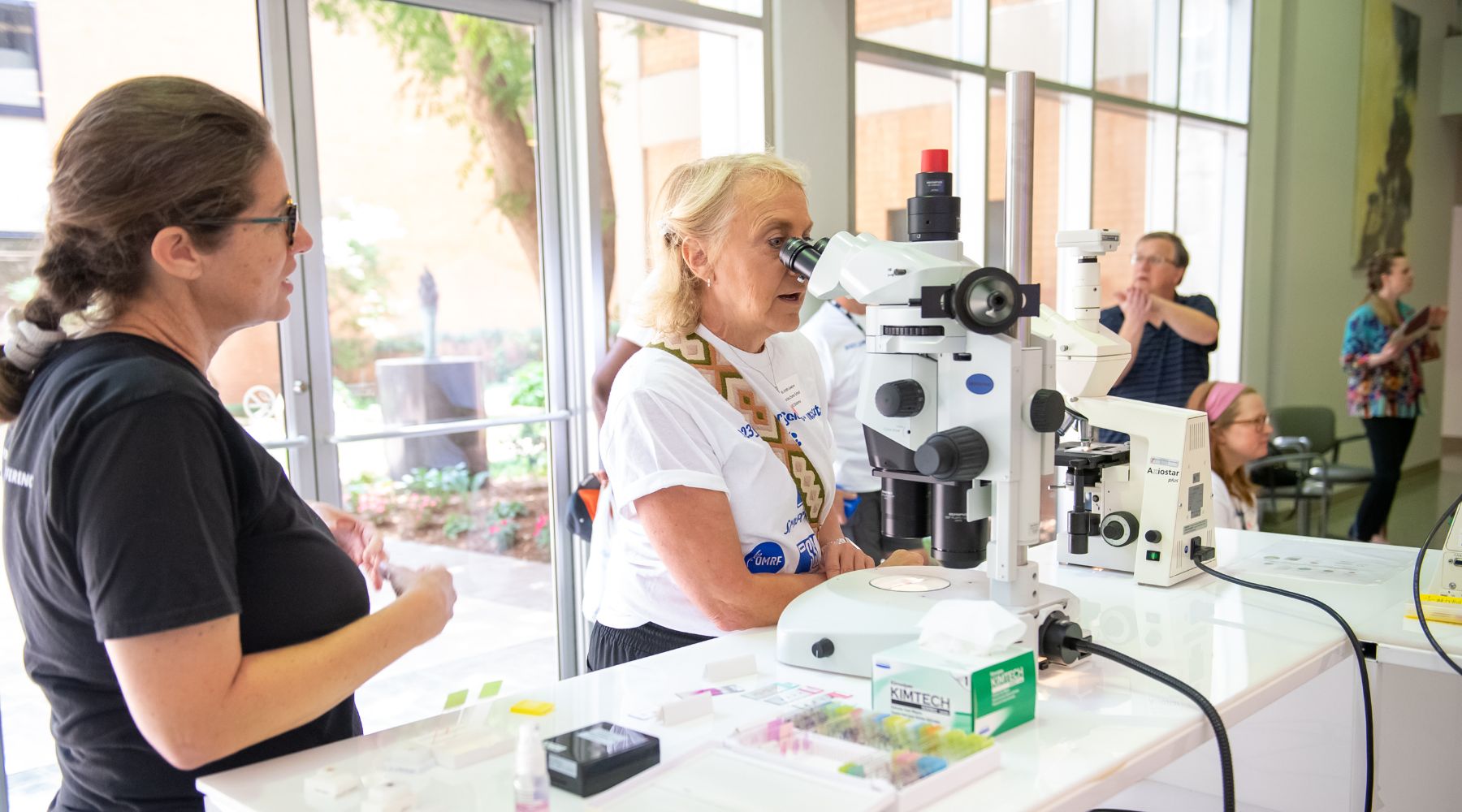With lesson plans complete and classrooms closed for the summer, nearly 35 Oklahoma middle school science teachers from around the state took a field trip to the Oklahoma Medical Research Foundation this week.
The visit was part of OMRF’s sponsorship of the Oklahoma School of Science and Mathematics Summer Science Institute. The program brought teachers from more than two dozen Oklahoma communities to Oklahoma City for a weeklong experience aimed at expanding their science background and building classroom resources.
OMRF President Andrew Weyrich, Ph.D., welcomed the educators and thanked them for their roles in creating a pathway for students to get excited about science.
“Oklahoma teachers are laying the foundation for the next generation of home-grown biomedical researchers,” Weyrich said. “OMRF is proud to be a resource for these educators.”
Lisa Day, OMRF’s vice president of government relations and advocacy and an OSSM Foundation board member, helped organize the event.
“Our researchers get to share with these teachers the real-world applications of the concepts they explore in the classroom,” Day said. “OMRF and OSSM’s longstanding partnership helps cultivate Oklahoma’s future scientists through hands-on experiences for teachers and students.”
During their afternoon at OMRF, the teachers split into groups to visit lab stations staffed by scientists focused on aging, cell division and microscope imaging.
At one station led by Courtney Sansam, Ph.D., researchers from the foundation’s Cell Cycle and Cancer Biology Research Program explained how using various cell models – from zebrafish and frog eggs to baker’s yeast – can help scientists better understand human cell behavior.
Moore’s Highland East Junior High science teacher Carla Shackelford said the program “opens your eyes” to the importance of engaging students with hands-on activities for each subject.
Scientists at the Cell Cycle and Cancer Biology lab stop also demonstrated how mistakes in cell division can happen by sorting playing cards by color. When errors in cell division occur, it can lead to miscarriage and birth defects. Shackelford said she plans to add this activity to her genetics lessons next year.
Special needs teacher Lisa Mosmeyer, also from Highland East Junior High, said the aging-focused lab visit impacted her because some of her students have conditions that cause them to age differently. Still, each activity inspired new ideas for her classroom.
“Many of my students have learning difficulties, so getting them to experience science with their hands makes it make more sense. It becomes alive to them,” Mosmeyer said.



